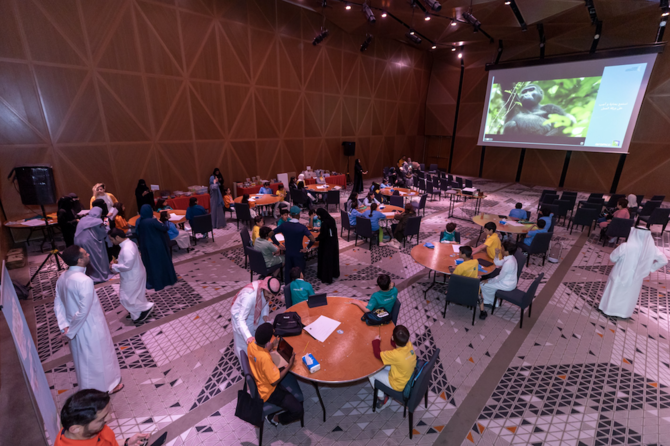- The children focused on innovative stories and solutions for protecting the existing ecosystems and tackling some of the environmental issues facing the planet
The Saudi Rukun Creative Exchange partnered with Designathon Works, a developmental and knowledge institution based in Amsterdam concerned with issues of sustainable development, to bring the event to the region.
Princess Noura Al-Saud, co-founder of Rukun Creative Exchange, told Arab News: “As a certified design thinker myself, I see the power in this tool and this method, and I believe in empowering children from as early as possible.
“If we include them in the conversation from early on, they become the change-makers of the future.
“The designathon works in enabling and empowering the ability of all children, no matter their background or their abilities or their race, to be part of this conversation.”
Designathon Works launched the international competitive design program in 2014, and since its inception it has been characterized by its wide geographical scope and diversity of participants.
The task at hand on Saturday was to find ways to restore and enhance biodiversity within the Kingdom.
The children focused on innovative stories and solutions for protecting the existing ecosystems and tackling some of the environmental issues facing the planet today.
The designathon awarded categories based on values rather than a ranking system: problem-solving, the clever mind, the young innovator, and team spirit.
The children, aged 8 to 12, were put into nine groups, launching first into a research and ideation phase, and then determining the main idea and creating a tangible prototype demonstrating its functionality in the real world, before presenting their work to a panel of judges.
Princess Noura said: “I was so impressed by the ideas that [the children] showed, and their enthusiasm more than anything.
“I knew they were very happy and open, and they were very receptive to working together.”
Hussam Al-Saud won the young innovator award after creating a robot that helped with planting seeds across farmlands. Generated by solar panels, his solution utilized the Saudi sun.
He said: “I chose this so I can fulfill the Saudi Vision 2030 for a greener future.”
The problem-solving champions were team one, who prioritized the preservation of wildlife in the desert.
Ibrahim, one of the team’s members, said: “There’s no food for animals in the desert, like snakes and camels. Over 50 animals die of heat exhaustion. We came up with this [idea] where there are seeds on the drone.”
Their theory was that seeds are planted and watered using drones, and the children predicted that in just a few months, the seedlings would sprout, providing a sustainable food supply for the desert animals.
Group six triumphed in the team spirit award, with members inventing a tube that connected rivers in the desert to cities, acting as a main water source.
The children equipped their project with solar panels which chimed in the event of a power outage.
Judges commended the students on their excellent presentation skills and strength in team collaboration.
Team five took the clever mind award after members designed an area, powered by a windmill, where polluted water is treated.
Their study showed what the choices are: neglecting or nurturing the environment.
One of the team’s members said: “Our project shows what happens if you care or do not care about the environment, and informs people to take care of the environment, maybe even make a podcast and show how you can stop this from happening.”
The GCD contributes to developing children’s skills and gives them the space to participate in thinking toward building a better future.
Its values are in line with both the Kingdom’s Vision 2030 and the UN’s Sustainable Development Goals and initiatives.
Rukun Creative Exchange has revealed plans to make the GCD an ongoing event.
Princess Noura said: “[We’re] looking at doing more throughout the year so it’s not just a one-time thing, but actually keeping it going throughout the year and collaborating with schools and other entities.
“Seeing this today just reinforces how much this needs to become systemized throughout schools and in part of the programs, and even teaching teachers this kind of method.”

